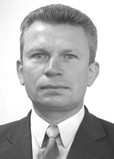Sensitive periods in human ontogenesis
Фотографии:
ˑ:
PhD, Associate Professor Yu.M. Kabanov1
PhD, Associate Professor D.A. Venskovich1
Associate Professor V.V. Trushchenko1
V.A. Koloshkina1
1Vitebsk State University named after P.M. Masherov, Vitebsk, Republic of Belarus
The article highlights the issues related to the development of man’s motor abilities during ontogenesis. The authors carried out a theoretical analysis of the data obtained by Belarusian and Russian scientists in the field of theory and methodology of physical culture, devoted to the study of the signs of the sensitive periods of development of man’s motor abilities. The analysis revealed that, at seven, the number of sensitive periods of development of motor abilities in both males and females increases; moreover, their number in females exceeds that in males, and this dynamics remains unchanged until the age of 11 in females and 12 - in males. At the age of 11, the number of signs of the sensitive periods in females reaches its maximum, after which it decreases significantly up to 13 years of age, which may be due to puberty. Males aged from 10 to 12 have a wavy dynamics in the quantitative signs of the sensitive periods, but it is weakly pronounced. In the period from 12 to 14 years, representatives of both sexes have the same number of signs of the sensitive periods. From 13 to 14, females and males are observed to have another increase in their number. Moreover, starting from 15, these indicators in males begin to exceed those in females. From the age of 14, there is a gradual decrease in the number of sensitive periods in representatives of both sexes. This dynamics will persist over subsequent age periods up to 22 years.
Keywords: motor abilities, age dynamics, sensitive (critical) periods.
References
- Alyabyshev A.P. Dinamika morfofunktsionalnykh pokazateley u malchikov-gimnastov 7–12 let [Dynamics of morphofunctional indicators in 7-12 year-old gymnasts]. Technical training control methods for athletes [Athletes' technical training control methods]. Omsk, 1980. pp. 3–5.
- Bal'sevich V.K. Ontokineziologiya cheloveka [Human ontokinesiology]. M.: Teoriya i praktika fiz. kultury i sporta publ., 2000. 275 p.
- Bal'sevich V.K. Aktivizatsiya tempov fizicheskogo razvitiya detey 4–5-letnego vozrasta [Intensification of physical development rates of 4–5 year-olds]. Fizicheskaya kultura: vospitanie, obrazovanie, trenirovka. 1996. no. 3. pp. 5–6.
- Volkov L.V. Sistema napravlennogo razvitiya fizicheskikh sposobnostey v raznye vozrastnye periody [System of targeted development of physical abilities in different age periods]. Doct. diss. abstr. Hab. M., 1984. 40 p.
- Guzhalovskiy A.A. Razvitie dvigatelnykh kachestv u shkolnikov [Development of motor qualities in students]. Minsk: Narodnaya asveta publ., 1978. 88 p.
- Guzhalovskiy A.A. Problema «kriticheskikh» periodov ontogeneza v ee znachenii dlya teorii i praktiki fizicheskogo vospitaniya [Problem of “critical” periods of ontogenesis in its significance for theory and practice of physical education]. Ocherki po teorii fizicheskoy kultury. M., 1984. pp. 211–224.
- Gladysheva A.A. Vozrastnye izmeneniya somatometricheskikh pokazateley u yunykh sportsmenov [Developmental changes in somatometric indices in young athletes]. Problemy fizicheskogo vospitaniya. M., 1976. 104 p.
- Matveyev L.P., Nepopalov V.N. Fizicheskaya kultura: fizkultura i razvitie cheloveka [Physical education: physical culture and human development]. Teoriya i praktika fiz. kultury. 1995. no. 5. pp. 2–5.



 Журнал "THEORY AND PRACTICE
Журнал "THEORY AND PRACTICE